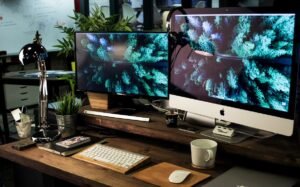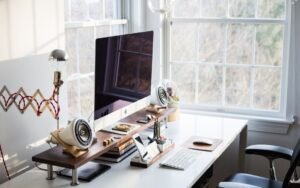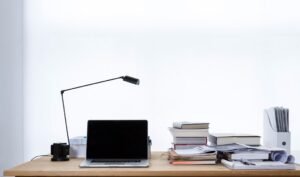How to Make AI Art
Artificial Intelligence (AI) has made significant advancements in recent years, and now it is even being used to create art. AI art, also known as computational creativity, is a fusion of technology and artistic expression that has captivated the imagination of many. In this article, we will explore the process of making AI art and provide valuable insights into how you can delve into this exciting realm of creativity.
Key Takeaways:
- AI art blends technology and artistic expression.
- Generative adversarial networks (GANs) are commonly used in AI art creation.
- Training data plays a pivotal role in the quality of AI-generated art.
- An AI-generated artwork is a collaboration between the programmer and the machine.
**AI art relies on a technique called generative adversarial networks (GANs), which consist of two neural networks: the generator and the discriminator. The generator creates new artwork, whereas the discriminator evaluates the generated art against a dataset of real artwork. These networks work together to refine the AI’s artistic capabilities.** By training the GAN on a vast dataset of existing artwork, the AI gains an understanding of various art styles, compositions, and techniques, allowing it to create new, unique pieces.
**One fascinating aspect of AI art is that it is a collaboration between the programmer and the machine. The programmer establishes the parameters and objectives of the AI, while the machine generates the actual artwork based on those instructions. This partnership combines human creativity with machine learning algorithms to produce astonishing results.**
Steps to Create AI Art:
- Define the Objective: Determine what you want to achieve through your AI art, whether it’s creating abstract paintings, generating surreal landscapes, or mimicking the style of a famous artist.
- Gather Training Data: Collect a diverse dataset of artwork that aligns with your objective. This could include famous paintings, photographs, or even digital illustrations.
- Preprocess the Data: Clean and normalize the training data to ensure consistency and improve training performance. This may involve resizing images, removing noise, or enhancing details.
- Choose a GAN Framework: Select a GAN framework, such as TensorFlow, PyTorch, or Keras, which provides the necessary tools and functions for creating and training your AI art.
- Create the Generator: Design the generator network architecture that will generate new artwork based on the training data. Experiment with different layers, activation functions, and hyperparameters to optimize the creativity and quality of the AI-generated art.
- Train the GAN: Train the GAN by feeding it the preprocessed training data and iteratively refining the generator and discriminator networks. This may require computational resources, such as GPUs, to expedite the training process.
- Evaluate and Fine-tune: Critically evaluate the AI-generated artwork and fine-tune the GAN if necessary. Adjusting the training data, network architecture, or algorithms can enhance the specificity and style of the AI’s creations.
| Framework | Advantages | Disadvantages |
|---|---|---|
| TensorFlow | Large community support | Steep learning curve |
| PyTorch | Pythonic syntax and flexibility | Less straightforward for beginners |
| Keras | Simple and user-friendly | Less customizable compared to others |
**With the availability of various GAN frameworks, such as TensorFlow, PyTorch, and Keras, programmers can choose the framework that best suits their preferences and needs. Each framework offers unique advantages and disadvantages, ensuring flexibility and customization options for artists and developers.**
Challenges and Ethical Considerations:
- The challenge of achieving originality in AI-generated art.
- The ethical implications of AI art ownership and copyright.
**One of the challenges in AI-generated art is the issue of originality. Some argue that since AI uses existing datasets for training, it lacks the ability to truly create something entirely original. However, the combination of AI’s ability to generate new patterns and the programmer’s influence can still result in novel and unique artistic creations.**
Another aspect to consider is the ethical implications surrounding AI art ownership and copyright. As AI becomes more capable of replicating styles and imitating artists, questions arise about who owns the rights to AI-generated artwork and how it should be attributed. These issues are still under debate and will likely shape the future of AI art.
| Tool | Advantages | Disadvantages |
|---|---|---|
| DeepArt.io | Intuitive user interface, variety of styles | Limited customization options |
| Runway ML | Real-time interaction, extensive model library | Subscription-based pricing |
| Google DeepDream | Accessible and beginner-friendly | Less control over output |
**Fortunately, there are several AI art tools available that can aid in the creation process. Platforms like DeepArt.io, Runway ML, and Google DeepDream offer intuitive interfaces and pre-trained models, allowing artists to experiment with AI art without requiring extensive programming knowledge.** These tools democratize AI art and make it more accessible to a wider audience.
Artificial intelligence continues to push the boundaries of creativity, and AI-generated art is a remarkable testament to the fusion of technology and artistic expression. Through the use of GANs and the collaboration between programmers and machines, artists can unlock new realms of creativity. As AI art evolves, it is crucial to address the challenges and ethical considerations that arise, fostering a responsible and innovative AI art community.
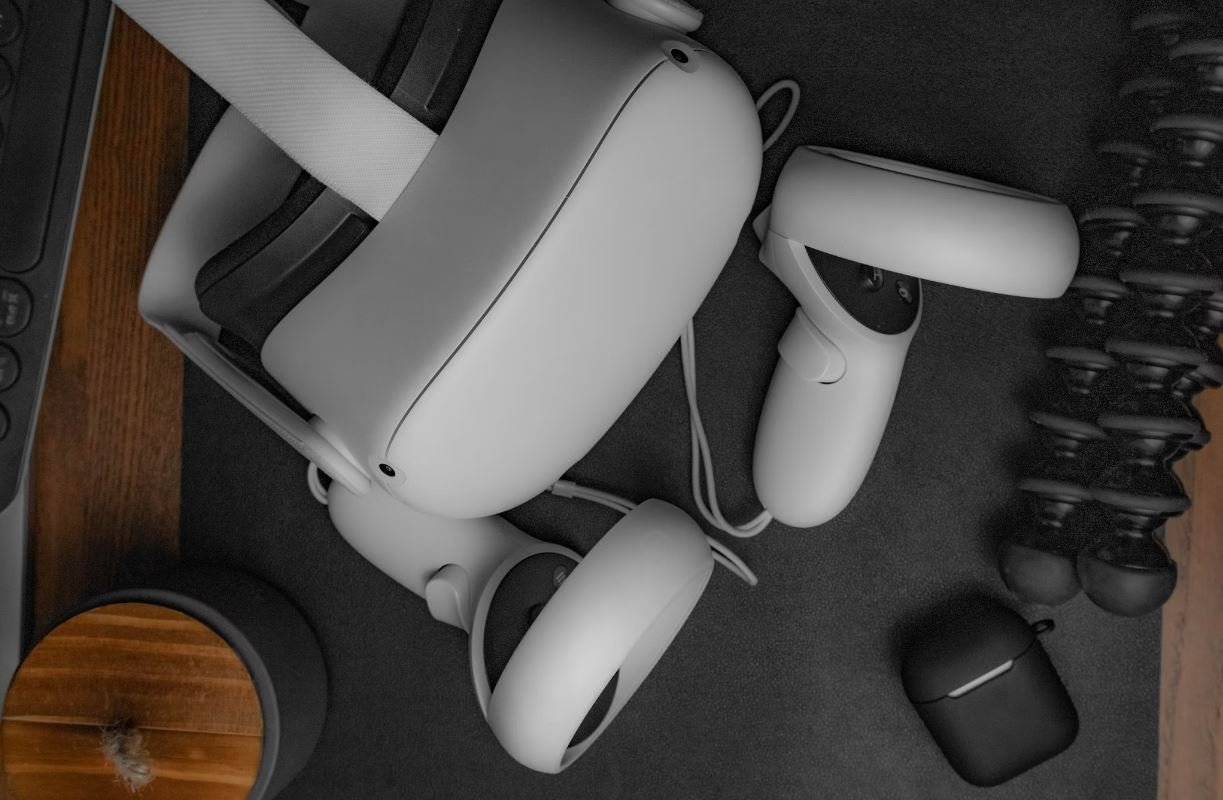
Common Misconceptions
Misconception 1: AI Art is created entirely by machines
- AI art is a collaborative effort between human artists and machine learning algorithms.
- While machines can generate art, it still requires the input and guidance of human creativity.
- AI art tools assist artists in the creation process but do not replace human artistry and intention.
Misconception 2: AI Art lacks originality and creativity
- AI art has the potential to explore new artistic territories and push boundaries.
- The algorithms used in AI art can generate unique and unexpected results that human artists may not have imagined.
- AI allows for experimentation with new styles, techniques, and combinations, leading to innovative art forms.
Misconception 3: AI Art makes human artists obsolete
- AI art tools are designed to enhance human creativity and augment the artistic process, not replace it.
- Human artists bring their unique perspectives, emotions, and experiences, which cannot be replicated by machines.
- AI can be a powerful tool for artists, but it cannot replace the personal touch and deeper meaning that human art brings.
Misconception 4: AI Art is plagiarized or lacks intellectual property rights
- AI-generated art can be subject to copyright laws, just like any other form of creative expression.
- Artists using AI tools are responsible for ensuring that they have the necessary permissions and rights for their source material.
- AI art can build upon existing styles and techniques, but it still requires original input and guidance from the artist.
Misconception 5: AI Art is only for tech-savvy artists
- AI art tools are becoming more accessible and user-friendly, allowing artists of all backgrounds to explore AI in their creative process.
- Many AI art platforms provide intuitive interfaces and tutorials to help artists get started.
- Artists without extensive technical knowledge can still benefit from AI-powered tools, expanding their artistic possibilities.
Misconception 1: AI Art is created entirely by machines
- AI art is a collaborative effort between human artists and machine learning algorithms.
- While machines can generate art, it still requires the input and guidance of human creativity.
- AI art tools assist artists in the creation process but do not replace human artistry and intention.
Misconception 2: AI Art lacks originality and creativity
- AI art has the potential to explore new artistic territories and push boundaries.
- The algorithms used in AI art can generate unique and unexpected results that human artists may not have imagined.
- AI allows for experimentation with new styles, techniques, and combinations, leading to innovative art forms.
Misconception 3: AI Art makes human artists obsolete
- AI art tools are designed to enhance human creativity and augment the artistic process, not replace it.
- Human artists bring their unique perspectives, emotions, and experiences, which cannot be replicated by machines.
- AI can be a powerful tool for artists, but it cannot replace the personal touch and deeper meaning that human art brings.
Misconception 4: AI Art is plagiarized or lacks intellectual property rights
- AI-generated art can be subject to copyright laws, just like any other form of creative expression.
- Artists using AI tools are responsible for ensuring that they have the necessary permissions and rights for their source material.
- AI art can build upon existing styles and techniques, but it still requires original input and guidance from the artist.
Misconception 5: AI Art is only for tech-savvy artists
- AI art tools are becoming more accessible and user-friendly, allowing artists of all backgrounds to explore AI in their creative process.
- Many AI art platforms provide intuitive interfaces and tutorials to help artists get started.
- Artists without extensive technical knowledge can still benefit from AI-powered tools, expanding their artistic possibilities.
- AI art is a collaborative effort between human artists and machine learning algorithms.
- While machines can generate art, it still requires the input and guidance of human creativity.
- AI art tools assist artists in the creation process but do not replace human artistry and intention.
Misconception 2: AI Art lacks originality and creativity
- AI art has the potential to explore new artistic territories and push boundaries.
- The algorithms used in AI art can generate unique and unexpected results that human artists may not have imagined.
- AI allows for experimentation with new styles, techniques, and combinations, leading to innovative art forms.
Misconception 3: AI Art makes human artists obsolete
- AI art tools are designed to enhance human creativity and augment the artistic process, not replace it.
- Human artists bring their unique perspectives, emotions, and experiences, which cannot be replicated by machines.
- AI can be a powerful tool for artists, but it cannot replace the personal touch and deeper meaning that human art brings.
Misconception 4: AI Art is plagiarized or lacks intellectual property rights
- AI-generated art can be subject to copyright laws, just like any other form of creative expression.
- Artists using AI tools are responsible for ensuring that they have the necessary permissions and rights for their source material.
- AI art can build upon existing styles and techniques, but it still requires original input and guidance from the artist.
Misconception 5: AI Art is only for tech-savvy artists
- AI art tools are becoming more accessible and user-friendly, allowing artists of all backgrounds to explore AI in their creative process.
- Many AI art platforms provide intuitive interfaces and tutorials to help artists get started.
- Artists without extensive technical knowledge can still benefit from AI-powered tools, expanding their artistic possibilities.
- AI art has the potential to explore new artistic territories and push boundaries.
- The algorithms used in AI art can generate unique and unexpected results that human artists may not have imagined.
- AI allows for experimentation with new styles, techniques, and combinations, leading to innovative art forms.
Misconception 3: AI Art makes human artists obsolete
- AI art tools are designed to enhance human creativity and augment the artistic process, not replace it.
- Human artists bring their unique perspectives, emotions, and experiences, which cannot be replicated by machines.
- AI can be a powerful tool for artists, but it cannot replace the personal touch and deeper meaning that human art brings.
Misconception 4: AI Art is plagiarized or lacks intellectual property rights
- AI-generated art can be subject to copyright laws, just like any other form of creative expression.
- Artists using AI tools are responsible for ensuring that they have the necessary permissions and rights for their source material.
- AI art can build upon existing styles and techniques, but it still requires original input and guidance from the artist.
Misconception 5: AI Art is only for tech-savvy artists
- AI art tools are becoming more accessible and user-friendly, allowing artists of all backgrounds to explore AI in their creative process.
- Many AI art platforms provide intuitive interfaces and tutorials to help artists get started.
- Artists without extensive technical knowledge can still benefit from AI-powered tools, expanding their artistic possibilities.
- AI art tools are designed to enhance human creativity and augment the artistic process, not replace it.
- Human artists bring their unique perspectives, emotions, and experiences, which cannot be replicated by machines.
- AI can be a powerful tool for artists, but it cannot replace the personal touch and deeper meaning that human art brings.
Misconception 4: AI Art is plagiarized or lacks intellectual property rights
- AI-generated art can be subject to copyright laws, just like any other form of creative expression.
- Artists using AI tools are responsible for ensuring that they have the necessary permissions and rights for their source material.
- AI art can build upon existing styles and techniques, but it still requires original input and guidance from the artist.
Misconception 5: AI Art is only for tech-savvy artists
- AI art tools are becoming more accessible and user-friendly, allowing artists of all backgrounds to explore AI in their creative process.
- Many AI art platforms provide intuitive interfaces and tutorials to help artists get started.
- Artists without extensive technical knowledge can still benefit from AI-powered tools, expanding their artistic possibilities.
- AI-generated art can be subject to copyright laws, just like any other form of creative expression.
- Artists using AI tools are responsible for ensuring that they have the necessary permissions and rights for their source material.
- AI art can build upon existing styles and techniques, but it still requires original input and guidance from the artist.
Misconception 5: AI Art is only for tech-savvy artists
- AI art tools are becoming more accessible and user-friendly, allowing artists of all backgrounds to explore AI in their creative process.
- Many AI art platforms provide intuitive interfaces and tutorials to help artists get started.
- Artists without extensive technical knowledge can still benefit from AI-powered tools, expanding their artistic possibilities.
- AI art tools are becoming more accessible and user-friendly, allowing artists of all backgrounds to explore AI in their creative process.
- Many AI art platforms provide intuitive interfaces and tutorials to help artists get started.
- Artists without extensive technical knowledge can still benefit from AI-powered tools, expanding their artistic possibilities.
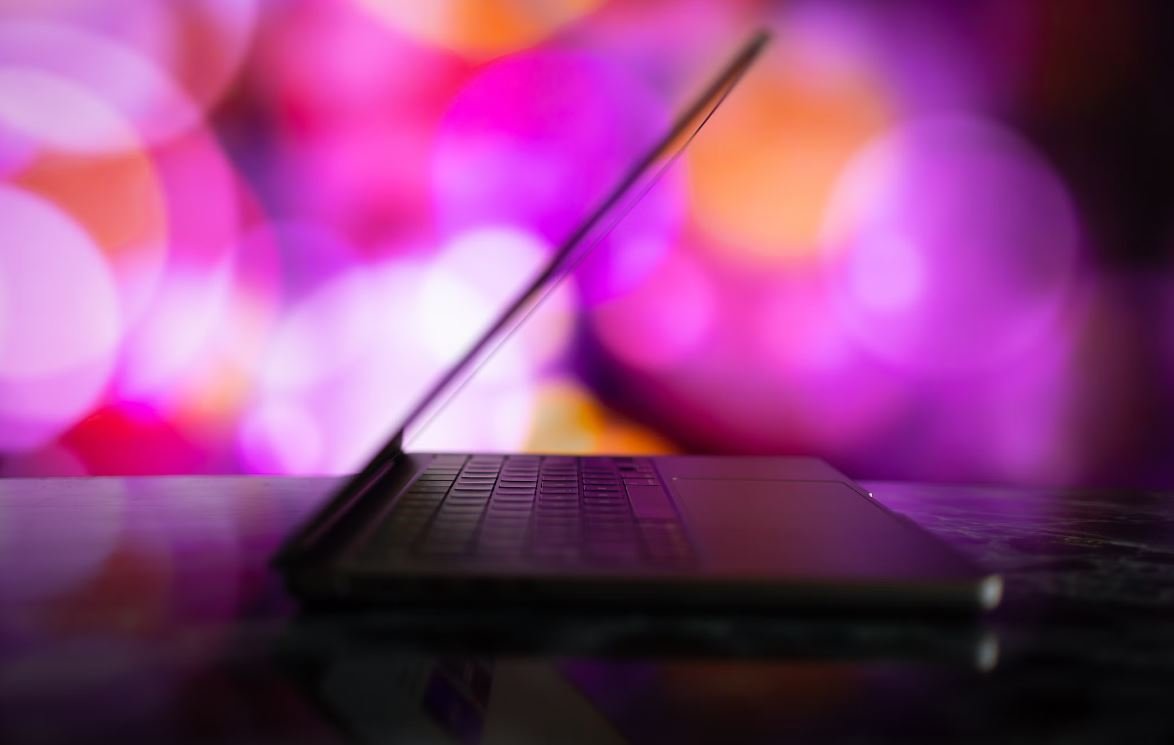
Introduction
In recent years, there has been a growing interest in the field of AI-generated art. Using machine learning algorithms, artificial intelligence can create visually stunning artworks that rival those created by human artists. This article explores various aspects of AI art and provides compelling data to shed light on this fascinating field.
Table: Top AI-Generated Artworks
This table showcases the top AI-generated artworks that have gained significant attention and recognition in the art world. These masterpieces demonstrate the incredible potential of AI in creating visually captivating pieces.
Table: Growth of AI Art Exhibitions
This table highlights the exponential growth of AI art exhibitions worldwide, indicating the increasing interest and acceptance of AI-generated art in the mainstream art community.
Table: Impact of AI Art on Art Market
This table delves into the impact AI art has had on the art market. It reveals the revenue generated by AI-generated art sales, emphasizing its growing significance in the art market.
Table: Artist Collaborations with AI
In this table, we explore artists who have collaborated with AI to create mesmerizing artworks. The table showcases these collaborations and the incredible results they have produced through the fusion of human creativity and AI technology.
Table: AI Art Competitions
AI art competitions have emerged as a platform to recognize and celebrate the exceptional talents of AI algorithms. This table showcases some prominent AI art competitions and the winners who have pushed the boundaries of creativity.
Table: AI Art Collectors
In this table, we examine notable collectors who have shown a keen interest in AI-generated artworks. It highlights the art collectors’ diverse backgrounds and their appreciation for the uniqueness of AI art.
Table: AI Art and Intellectual Property
This table explores the legal and intellectual property aspects related to AI art. It investigates copyright challenges, ownership debates, and the emerging legal frameworks in response to this groundbreaking form of artistic expression.
Table: AI Art in Education
This table focuses on the integration of AI art in educational curricula. It spotlights academic institutions that have incorporated AI-generated art into their art programs, revolutionizing the way art is taught and inspiring aspiring artists.
Table: Public Perception of AI Art
In this table, we analyze public opinion on AI-generated art. It combines survey data and social media sentiment analysis to reveal the attitude towards AI art, ultimately showing the public’s acceptance and appreciation of this emerging art form.
Table: Future Applications of AI Art
This table explores the potential future applications of AI-generated art beyond the traditional art world. It highlights how AI art is being used in industries such as advertising, interior design, and fashion, paving the way for new opportunities and creative collaborations.
Conclusion
The world of AI-generated art is captivating both artists and art enthusiasts alike. The data presented in these tables demonstrates the remarkable growth, impact, and potential of AI art. As technology continues to advance, AI art will undoubtedly become an integral part of the art world, pushing the boundaries of artistic expression and challenging traditional notions of creativity.
Frequently Asked Questions
How to Make AI Art
What is AI art?
AI art is art created using artificial intelligence algorithms. It involves using computer programs to generate or assist in the creation of artwork, whether it’s visual art, music, or other forms of artistic expression.
How does AI art creation work?
AI art creation typically involves feeding a computer program with a large dataset of existing artwork. The program then uses machine learning techniques to analyze the patterns and styles in the dataset and generate new art based on those patterns. The output can be further refined and customized by the artist using various parameters and settings.


